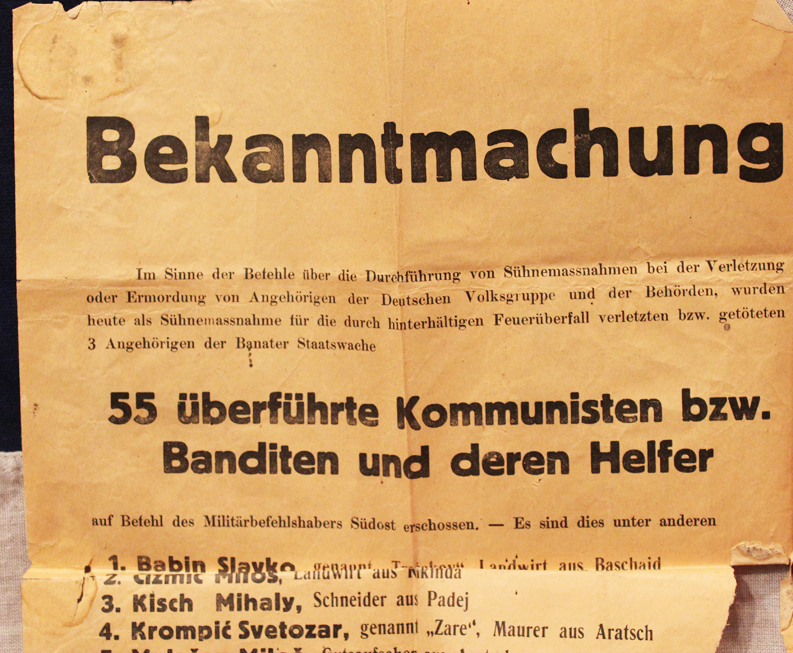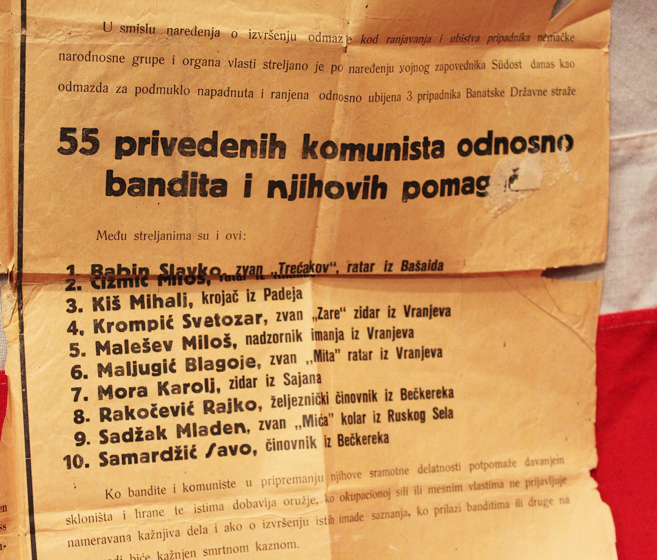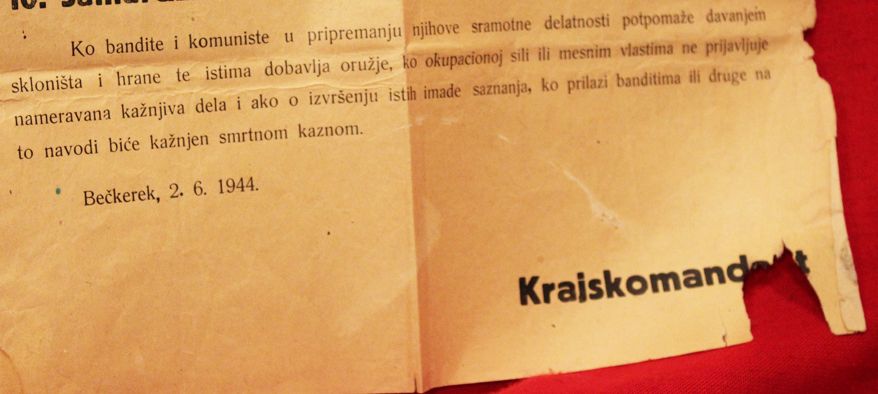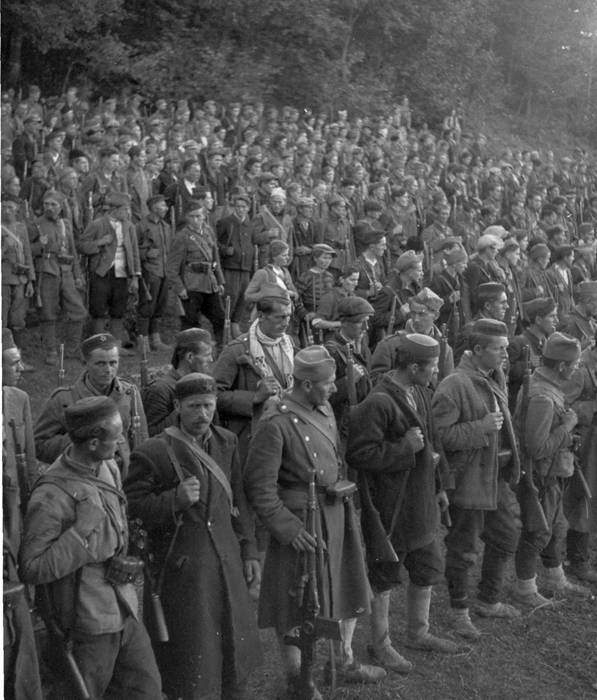A Nazi German Occupation WW2 Public Notice Wanted Poster 1944
Listing in two languages, German and East European [possibly Slovenian] 55 Communist Bandits and their helpers. Various torn areas but vital to be kept as a piece of unique WW2 history. Would be perfect framed for display. In the aftermath of Munich, Slovak politicians from the democratic parties (Republican Party of Farmers and Peasants, Czechoslovak Social Democratic Party, and Czechoslovak National Socialist Party) organized a resistance movement. Individual underground cells sprang up in towns and villages throughout Slovakia. A campaign of "whispering" propaganda was initiated to alert the acquiescent Slovak population to the true nature of the Tiso regime. The goal of the democratic resistance was the restoration of the Czechoslovak Republic, but with greater participation for Slovakia. In the spring of 1939, the "Zeta" headquarters was established in Bratislava to coordinate with the Czech resistance and to transmit intelligence information to the liberation movement abroad. Party Communists remaining in Slovakia formed the underground Communist of Slovakia (Komunisticka strana Slovenska--KSS) and until 1943 favored the creation of an independent "Soviet Slovakia."
The shortage of qualified personnel enabled resistance members to infiltrate all levels of the Tiso administration, where they promoted economic sabotage. Mutiny within the Slovak army (marshaled by the Axis powers for combat against Poland and, later, the Soviet Union) was encouraged and became commonplace. At Kremnica, on September 15, 1939, approximately 3,500 Slovak soldiers abandoned their transport train and marched into the city. Members of the underground Slovak Revolutionary Youth set fire to machinery in factories, emptied the fuel tanks of locomotives, and exploded munitions in warehouses. Slovak youth turned increasingly against the Tiso regime.
In his Christmas broadcast of 1942, Benes called for resistance groups in Slovakia to increase their activity in preparation for a seizure of power. The groups worked to unify their efforts. The following November, negotiations between democratic and communist resistance leaders culminated in the signing of the Christmas Agreement of 1943. The agreement called for the creation of the Slovak National Council to represent the political will of the Slovak nation. The Slovak National Council would act in concert with the Czechoslovak government and liberation movement abroad. The postwar Czechoslovak state would be democratic and organized on the basis of national equality. The Christmas Agreement provided also for a close association with the Soviet Union in foreign policy and military affairs. Benes endorsed the agreement on March 27, 1944.
The Allied powers agreed that Slovakia would be liberated by Soviet armies. In March 1944, with Benes's approval, the Slovak National Council authorized Lieutenant-Colonel Jan Golian to prepare for a national coup to be coordinated with the arrival of Soviet troops. Golian organized a secret military center at Banska Bystrica and created Slovak partisan units composed of escaped prisoners of war and army deserters. The Slovak National Uprising of August 29, however, was premature. The Soviet government, regarding the Slovak resistance as politically suspect, failed to inform the Slovaks of a change in Soviet strategy. Despite American efforts to assist the uprising, the German Wehrmacht occupied Slovakia, and Banska Bystrica fell on October 27. Nonetheless, local partisan warfare continued up to the liberation.
Code: 19676
120.00 GBP





